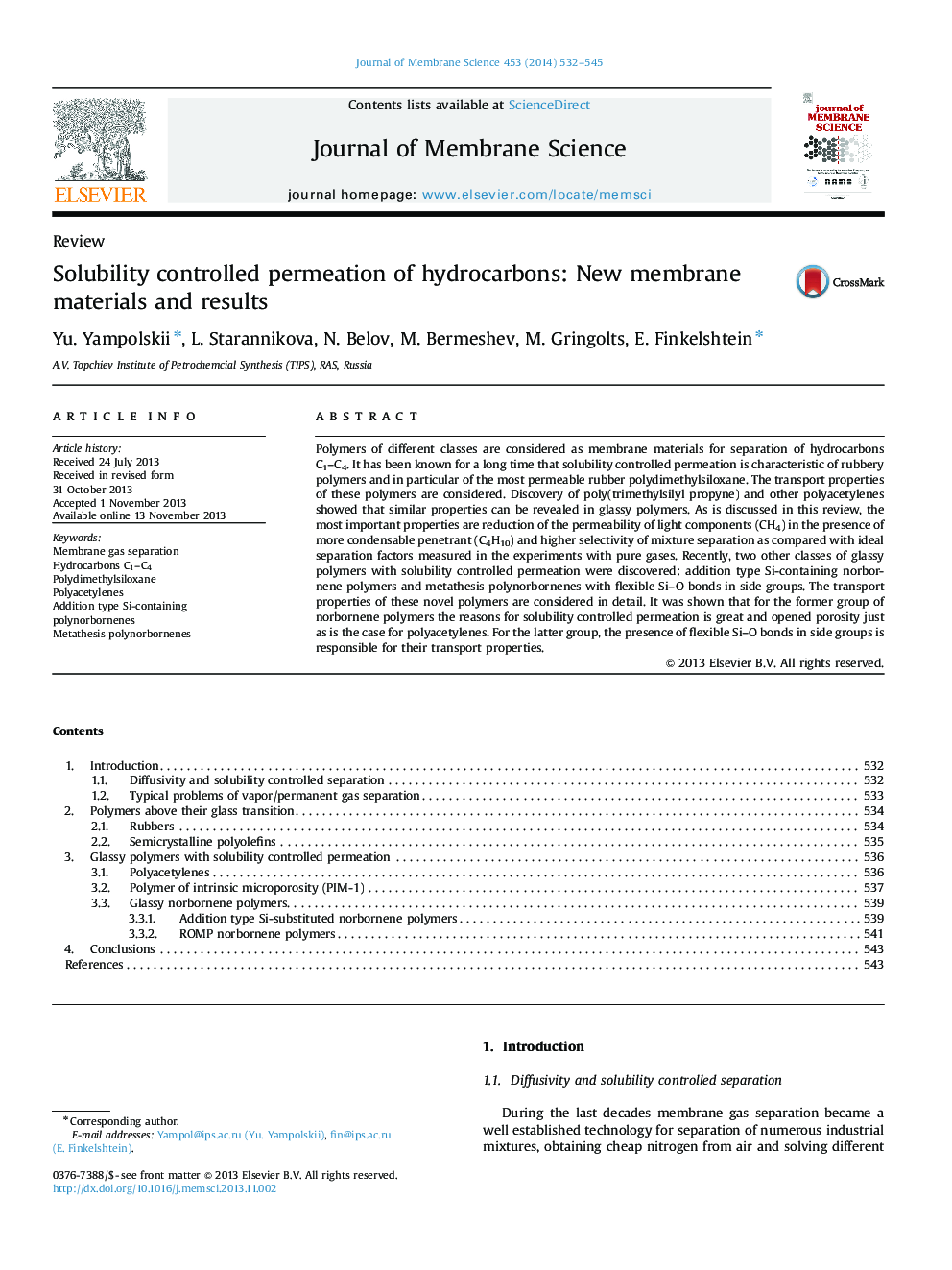| Article ID | Journal | Published Year | Pages | File Type |
|---|---|---|---|---|
| 633761 | Journal of Membrane Science | 2014 | 14 Pages |
Abstract
Polymers of different classes are considered as membrane materials for separation of hydrocarbons C1-C4. It has been known for a long time that solubility controlled permeation is characteristic of rubbery polymers and in particular of the most permeable rubber polydimethylsiloxane. The transport properties of these polymers are considered. Discovery of poly(trimethylsilyl propyne) and other polyacetylenes showed that similar properties can be revealed in glassy polymers. As is discussed in this review, the most important properties are reduction of the permeability of light components (CH4) in the presence of more condensable penetrant (C4H10) and higher selectivity of mixture separation as compared with ideal separation factors measured in the experiments with pure gases. Recently, two other classes of glassy polymers with solubility controlled permeation were discovered: addition type Si-containing norbornene polymers and metathesis polynorbornenes with flexible Si-O bonds in side groups. The transport properties of these novel polymers are considered in detail. It was shown that for the former group of norbornene polymers the reasons for solubility controlled permeation is great and opened porosity just as is the case for polyacetylenes. For the latter group, the presence of flexible Si-O bonds in side groups is responsible for their transport properties.
Related Topics
Physical Sciences and Engineering
Chemical Engineering
Filtration and Separation
Authors
Yu. Yampolskii, L. Starannikova, N. Belov, M. Bermeshev, M. Gringolts, E. Finkelshtein,
